Honor Award
Piggyback Yard Feasibility Study
Los Angeles
Mia Lehrer + Associates, Los Angeles
Client: Friends of the Los Angeles River and LA River Revitalization Corporation
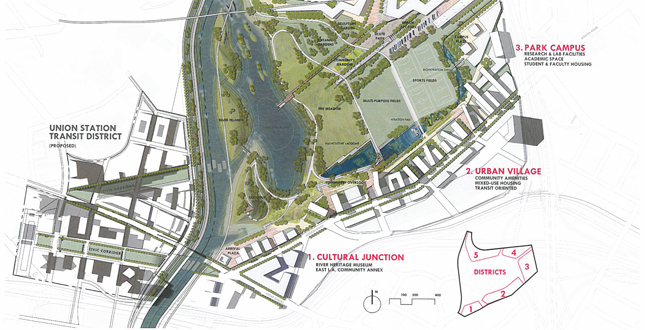 Close Me!
Close Me!Piggyback and the Los Angeles River
Site Plan
Download Hi-Res ImageImage: Mia Lehrer + Associates
Image 1 of 16
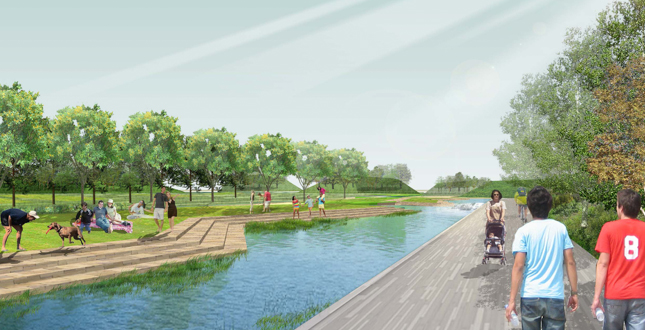 Close Me!
Close Me!Piggyback and the Los Angeles River
The size and location of the Piggyback Yard site along the Los Angeles River offers a unique opportunity to allow the river to regain some of its natural character, create neighborhood enhancement opportunities and increase economic prosperity through redevelopment.
Download Hi-Res ImageImage: Mia Lehrer + Associates
Image 2 of 16
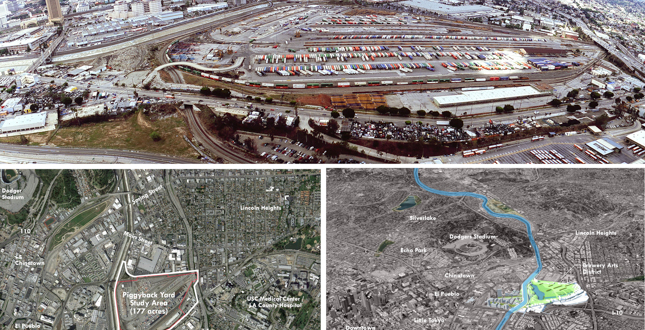 Close Me!
Close Me!Transforming a Railyard
The project area includes the 125-acre Piggyback Rail Yard, technically referred to as the Los Angeles Transportation Center (LATC) and an assortment of adjoining smaller parcels of predominantly marginalized light industrial uses, comprising a total of 177 acres.
Download Hi-Res ImageImage: Mia Lehrer + Associates
Image 3 of 16
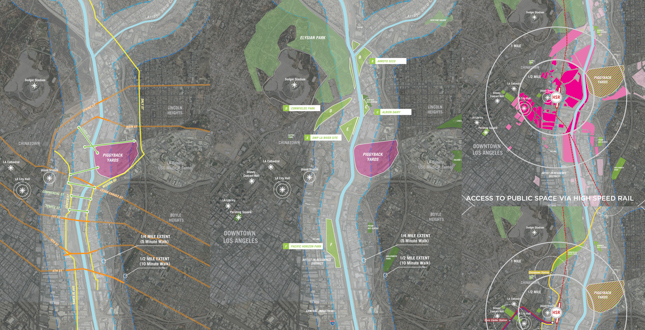 Close Me!
Close Me!A River Destination
Offering genuine access and connectivity to a unique urban riparian landscape for a diverse population, bridging a gap between east and west L.A, combining wetlands restoration, parkland creation, flood detention and community development that supports a livable Los Angeles River.
Download Hi-Res ImageImage: Mia Lehrer + Associates
Image 4 of 16
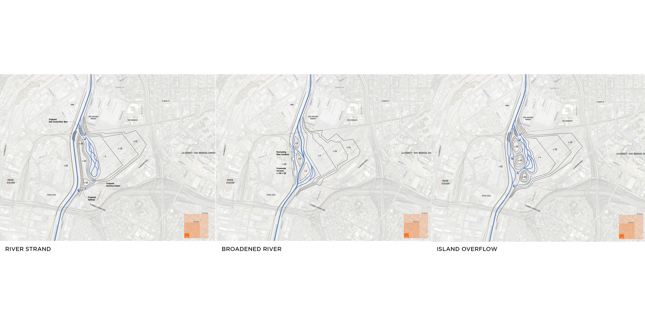 Close Me!
Close Me!Exploring Design Concepts
After an initial assessment of two conceptual master plans – River Strand and Broadened River – each employing different approaches to managing flood attenuation and creating areas for habitat, third strategy Island Overflow was developed maximizing benefits from the two previous plans.
Download Hi-Res ImageImage: Mia Lehrer + Associates
Image 5 of 16
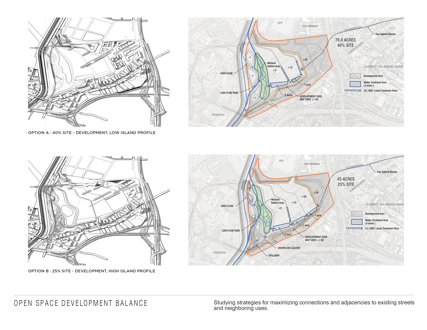 Close Me!
Close Me!Open Space Development Balance
Studying strategies for maximizing connections and adjacencies to existing streets and neighboring uses.
Download Hi-Res ImageImage: Mia Lehrer + Associates
Image 6 of 16
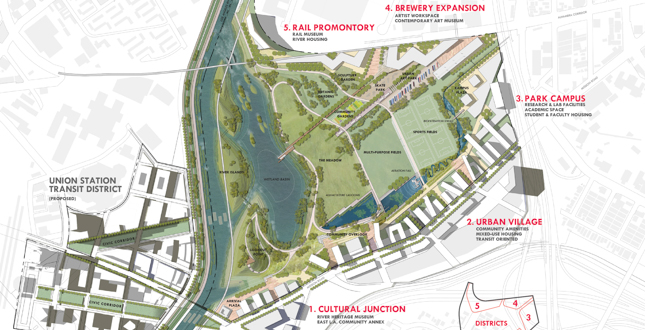 Close Me!
Close Me!A Multibenefit Solution
Presenting a multi-benefit solution to resolve the compounding effects of urbanization on the environment, this river revitalization project acts as catalyst for future urban regeneration.
Download Hi-Res ImageImage: Mia Lehrer + Associates
Image 7 of 16
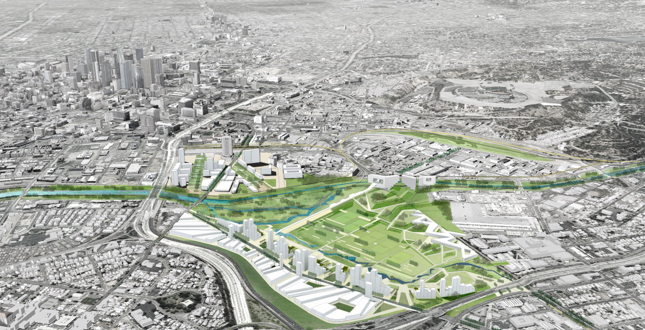 Close Me!
Close Me!Urban Vitality and Resilience
Recognizing that the LA River navigates through many conditions of urban places, neighborhoods, and naturalized areas, the Piggyback vision embraces the industrial corridor of Los Angeles a as unique to itself.
Download Hi-Res ImageImage: Mia Lehrer + Associates
Image 8 of 16
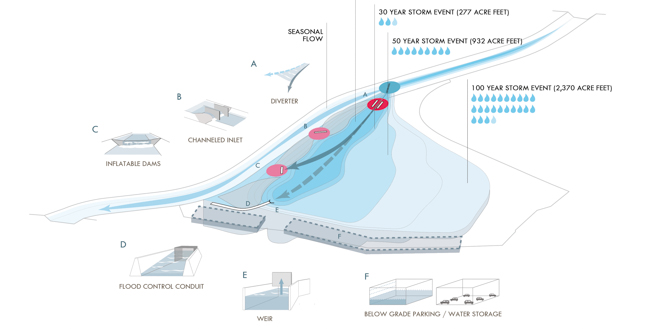 Close Me!
Close Me!Storm Event Management
Utilizing the full extent of the rail yard property, the 125-acre parcel allows for the unique opportunity to significantly alter the river channel creating a new terrain that supports riparian habitat and provides public access while maintaining hydraulic performance during peak flows.
Download Hi-Res ImageImage: Mia Lehrer + Associates
Image 9 of 16
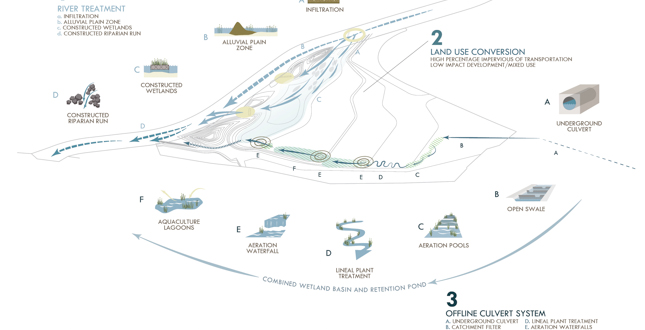 Close Me!
Close Me!Improved Water Quality
The design of the Piggyback Yard site will improve water quality through a number of enhancements, including land use conversion of the site, improved ecological functioning of the LA River, and stormwater treatment technologies.
Download Hi-Res ImageImage: Mia Lehrer + Associates
Image 10 of 16
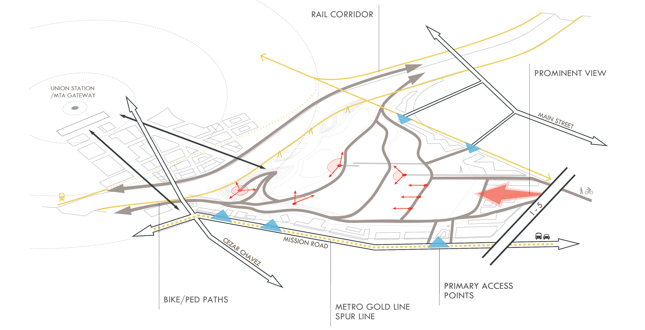 Close Me!
Close Me!Connectivity
With respect to the lack of connections across the river, the Piggyback Yard site is an incredible opportunity to improve connectivity mending the neighborhoods of East LA together with downtown
Download Hi-Res ImageImage: Mia Lehrer + Associates
Image 11 of 16
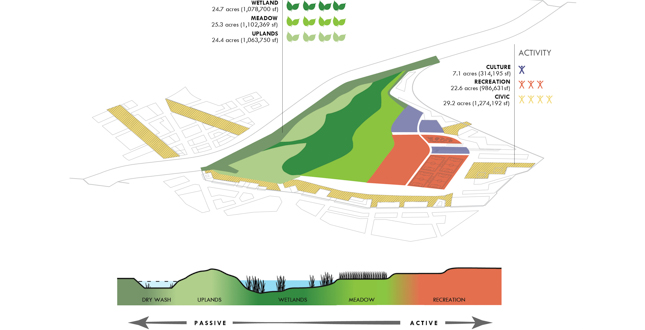 Close Me!
Close Me!Site Programming
Organized by elevation and proximity to the river; passive uses are located in the lower plateaus increasing in intensity as the elevation increases orienting people, ensuring the sanctity of habitat areas, minimizing maintenance, providing access, and heightening awareness of the sites relationship to the river.
Download Hi-Res ImageImage: Mia Lehrer + Associates
Image 12 of 16
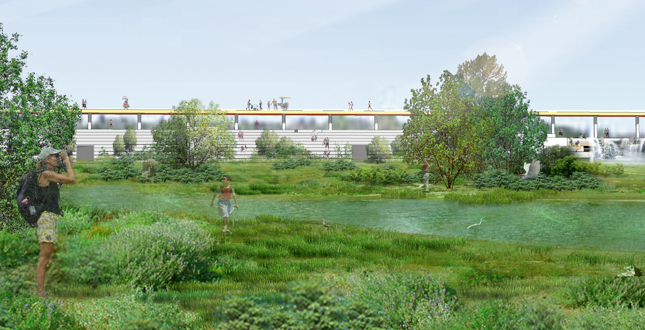 Close Me!
Close Me!Recalibrating the Los Angeles River
Our cities must plan to recalibrate its infrastructural systems to handle the compounding effects of 20th Century urbanization combined with more frequent and severe storms as a result climate change.
Download Hi-Res ImageImage: Mia Lehrer + Associates
Image 13 of 16
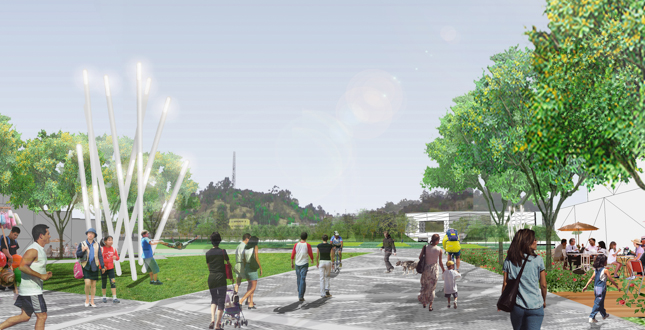 Close Me!
Close Me!Supporting Interactions
Transforming Los Angeles for the symbiotic betterment of its community and its ecology, creating a significant opportunity for meaningful interaction between people and nature.
Download Hi-Res ImageImage: Mia Lehrer + Associates
Image 14 of 16
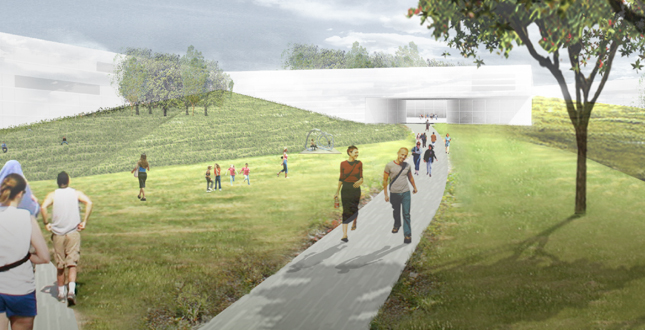 Close Me!
Close Me!A New Industrial Landscape
The city is in process of fostering a new industrial landscape compatible for urban residential growth and fosters an industrial sector that is cleaner, non-harmful, denser and more economically robust; sponsoring centers for technological advancement and sustainable/regenerative research.
Download Hi-Res ImageImage: Mia Lehrer + Associates
Image 15 of 16
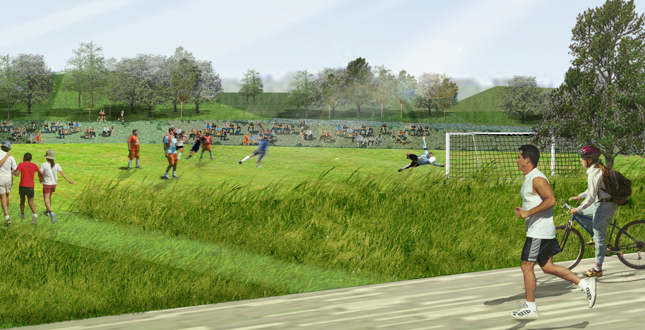 Close Me!
Close Me!Shifting the Paradigm
The Piggyback Yard represents the paradigm shift, signaling a departure from the region’s 20th Century process of development and signals the importance of large infrastructural change that provide long-lasting benefits for both the community and environment.
Download Hi-Res ImageImage: Mia Lehrer + Associates
Image 16 of 16
Project Statement
This project examines converting a 125-acre rail yard into a new terrain supporting riparian habitat and providing public access while maintaining hydraulic performance during peak flows within the central corridor of Los Angeles. Outlining the development and hydrological programs that will transform Piggyback Yard from a concrete industrial landscape to a “River Destination”, an ambitious, transformative vision forms the cornerstone of the revitalization of the LA River corridor acting as a catalyst for urban regeneration.
Project Narrative
—2012 Professional Awards Jury
As a means to make our urban centers more vital, the transformation of central city industrial lands to accommodate metropolitan growth is simply a process of 21st century change. The significance of the nucleus of city’s central space and ability to host significant populations within our cities urban centers will outweigh the burden of remediation of land and processes for unlocking historically controlled industrial properties. Los Angeles is actively recognizing the importance of the ability to accommodate for higher and better uses of derelict lands while preserving the industrial zoning. Through efforts like the Clean-tech corridor the city is in process of fostering a new industrial landscape compatible for urban residential growth and fosters an industrial sector that is cleaner, non-harmful, denser and more economically robust; sponsoring centers for technological advancement and sustainable/regenerative research.
The Piggyback Yard represents the paradigm shift, signaling a departure from the region’s 20th Century process of development (compromising land for the sake of ease of implementation and short-sighted planning) and signals the impor- tance of large infrastructural change that provide long-lasting benefits for both the community and environment. The purpose of the Piggyback Yard Feasibility Study is to further understand the project’s scope and extent based upon the extensive work developed from the pro-bono Piggyback Yard Conceptual Master Plan. The study focuses on two topics critical to understanding the project’s aspirations: 1) the effects of hydrology on the site and river, and 2) understanding the site’s current market value and strategy for acquisition.
The vision for the Feasibility Study follows the path laid out by the Piggyback Conceptual Master Plan – one that seeks to maximize investment for the revitalization of the LA River and creation of a new place within the landscape of Downtown Los Angeles. The Piggyback Yard exemplifies the notion of urban regeneration, serving as a catalytic type of project that employs a systems-based form of green infrastructure that maximizes the benefits of ecology for people and place. Presenting a multi-benefit solution to resolve the compounding effects of urbanization on the environment, the Feasibility Study provides a description of the layering of benefits as a river revitalization project and its relevance to the city’s future.
The conceptual plan for the Piggyback Yard is founded on four key principles – to revitalize the Los Angeles River at the heart of the city; create significant public open space; connect adjacent neighborhoods; and build a diverse, vibrant community where people live, work, learn and play. The Piggyback Yard site is an incredible opportunity to improve connectivity mending the neighborhoods of East LA together with downtown. With respect to the lack of connections across the river, the streets that surround the site will serve a more vital role to connect pedestrians and cyclists. The site and river will afford new connections along and across the river’s banks. As a combined vision the plan plays a significant role in continued improvements for mobility and opportunities for community-oriented development.
Outlined in the Piggyback Yard Feasibility Study, is the development and hydrological programs that will transform Piggyback Yard from a concrete industrial landscape to a “River Destination” with the LA River featured as its primary asset. The size and location of the Piggyback Yard site along the Los Angeles River offers a unique opportunity to allow the river to regain some of its natural character, create neighborhood enhancement opportunities and increase economic prosperity through redevelopment.
The Piggyback Yard’s potential redevelopment will allow the LA River to become revitalized in a way that is unique to the downtown stretch of the river. To this end, design concepts were developed that allow for the river flows to access the Piggyback Yard in a manner that balances hydrologic, ecological, cultural and economic benefits. The hydrological program of the project provides additional flood storage to offset the risks of adjacent properties that are currently within the limits of the floodplain. The hydrological program includes water quality improvement elements, such as runoff and water treatment, and habitat creation, such as enhanced vegetation along the River and soft-bottom conversion. The flood storage, water quality and habitat enhancement components would establish a strong connection between Piggyback Yard and the LA River that enhances the ecological performance of the river, mitigates the site’s environmental risks, and creates a new destination on the LA River for people to live, work, and play.
The land acquisition and development portion of the Feasibility Study focused on two key analyses: firstly, assessing the current market, what can be reasonably supported today, recognizing that this is a long term planning effort; and secondly, what is the acquisition strategy for controlling the property. A market analysis was conducted along with consultation from wan expert panel of real estate developers to understand the feasibility of acquiring and developing the Piggyback Yard site as envisioned in the Conceptual Master Plan. The developable area rings the site’s northern, eastern and southern edges maximizing the site’s potential for riverfront edge development while maintaining most of the site as a multipurpose open space that engages the river. The project would require acquisition of the Los Angeles Transportation Center (LATC), also known as the Piggyback Yard, as well as seven additional properties at the southwest and southeast corners of the main parcel.
The development program envisions mixed-use development, a series of campus-like settings that further promote adjoining uses that include the USC Health Sciences Campus and the Brewery Arts District, as well as spur on the entrepreneurial activity emanating from start-ups within the Cleantech Corridor. Situated within a mile from Union Station, the Piggyback Yard is positioned to foster a walkable, transit served community prompting a more active population on the river. With the potential for the new High Speed Rail Station to be located somewhere between the existing tracks and the river, the eventual transformation of the area could spark a dramatic development transformation bringing on a 24-7 level of activity. This new “River Park Campus” will signal the arrival of Los Angeles’ innovation economy, while simultaneously providing green and recreational space to support the River’s environmental revitalization efforts.
To move forward with the Feasibility Analysis and Acquisition Strategy of the Piggyback Yard, a relocation strategy for Union Pacific’s LATC must be developed. The potential relocation of the rail facilities will have dramatic effects on the rail network and goods movement activities of Union Pacific. It is recommended that a Transportation and Goods Movement Expert would make an integral addition to the project. In addition to the relocation strategy of the LATC, an environmental assessment of the Piggy- back Yard site is recommended as it is likely that it will require significant remediation before it can be redeveloped and made ready for public use. At a later phase, it is recommended that a Land Consultant be hired to assist in the zoning and entitlements analysis required for the redevelopment of the Piggyback Yard site and for the relocation of the LATC.
Ultimately, the Piggyback Yard as described in this report offers the most significant opportunity to spur on similar projects that approach infrastructure, development and open space holistically and act as catalyst for future urban regeneration.
Project Resources
Lead Designer and Landscape Architect
Mia Lehrer + Associates
Additional Project Credits
Friends of the Los Angeles River
LA River Revitalization Corporation
Santa Monica Mountains Conservancy
Piggyback Master Plan Group
Friends of the Los Angeles River
Chee Salette Architecture Office
Michael Maltzan Architecture
Perkins+Will




